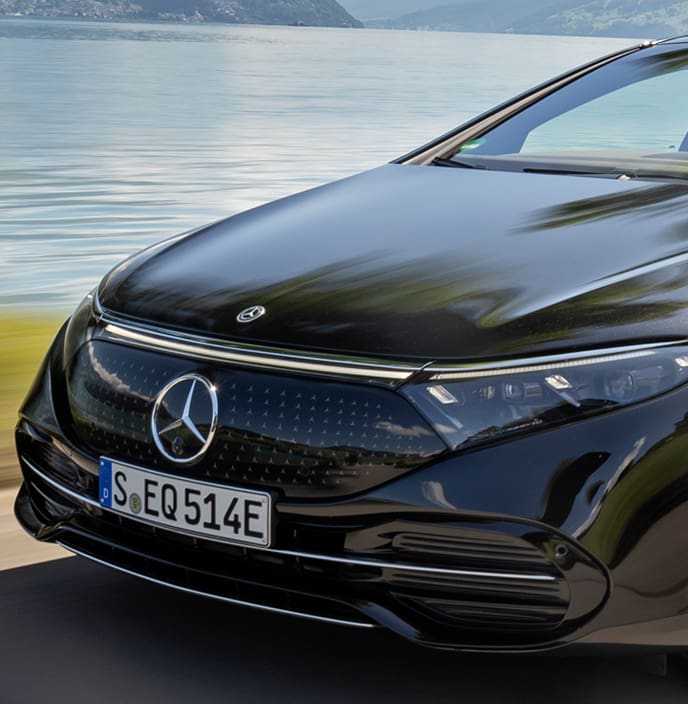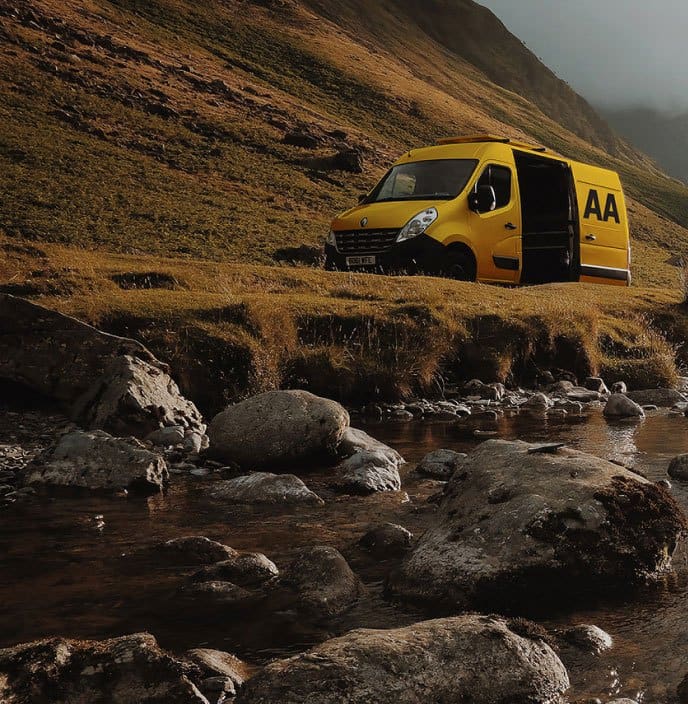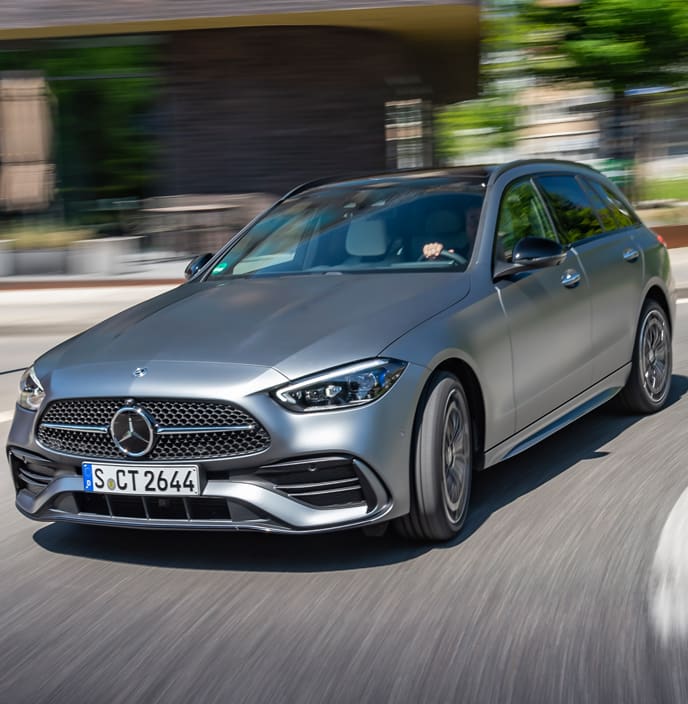Huge electric range, refinement, comfort, quality, technology


Mercedes-Benz
New Car Review: Mercedes EQS
Good Stuff 👍
Bad Stuff 👎
Odd braking system, feels bulky to drive
What is the Mercedes-Benz EQS?
The EQS is the first model to be built using the company’s new, exclusively electric, EVA architecture.
The EQS is a new dawn for Mercedes-Benz, and is the first model to be built using the company’s new, exclusively electric, EVA architecture. Previous electric Mercedes models, such as the EQA and EQC, have been built on adapted petrol and diesel model platforms.
As you might guess from the name, this is effectively an electric S-Class, albeit one that has no relationship to the current S-Class saloon aside from the badge and the infotainment system. It’s a huge luxury saloon (5.2-metres long, 2.1-metres wide across the mirrors, with a 3.2-metre wheelbase) which in this EQS 450+ form, gets a single electric motor, driving the rear wheels, and developing 333hp and 568Nm of torque. Feeding power to that motor is a vast 120kWh (gross) battery, which gives the EQS a potential one-charge range of as much as 745km, making it the longest-range EV you can currently buy.
How about the looks of the Mercedes-Benz EQS?
It marks a dramatic departure from the Mercedes norm
As with the technology, the styling of the EQS marks a dramatic departure from the Mercedes norm. Park an EQS next to a current S-Class, and the electric car looks almost as if it has landed from space. The styling is dominated by the roofline, which runs in a single unbroken arch (which Mercedes’ styling chief Gorden Wagener refers to as a ‘single bow’) from front wheels to back. The nose and tail of the EQS are so short as to be almost vestigial, and there’s no conventional bonnet — the front of the car is actually a sealed unit, and if you want to add windscreen wash, there’s a small pop-out drawer fitted into the front wheel arch.
It’s certainly dramatic, but it’s also perhaps a touch amorphous, almost looking like a car without a solid surface. Perhaps we’ll get used to it, but we’d argue that the smaller, somewhat tauter, EQE makes better use of this styling language. There is a dramatic benefit, though, which is that the bodywork is astonishingly aerodynamic. In fact, with a coefficient of drag rating of just 0.20Cd, the EQS is officially the most efficient car to push through the air, which doubtless makes a tremendous contribution to its lengthy range figure.
Neil Briscoe“Park an EQS next to a current S-Class, and the electric car looks almost as if it has landed from space.”
What is the Mercedes-Benz EQS like inside?
There are effectively two EQSs in terms of cabin layout
There are effectively two EQSs in terms of cabin layout. Later this year, Irish buyers will get the opportunity to buy an EQS fitted with the vast 55-inch ‘Hyperscreen’ dashboard, which features three large digitals screens — one for instruments, one for infotainment, and an extra screen for the front-seat passenger — under a huge, single sheet of glass. It certainly looks impressive, but it will also cost a fortune, and it doesn’t bear thinking about repair costs should something go wrong with it. It could also potentially prove very distracting when driving.
Thankfully, then, our test car came with the same digital instruments and 13-inch central infotainment screen as you’ll find in the current S-Class and C-Class. A let-down, compared to the Hyperscreen? Perhaps, in terms of showing off to the neighbours, but we actually think that this setup works rather well. The control layout on the central touchscreen is mostly logical and simple to use (albeit not as simple as physical buttons, but such is the way of the current motoring world…) and the digital screen in front of the driver is clear, usefully adaptable, and suitably expensive looking.
Without the Hyperscreen, you get a nice, broad sweep of wood veneer which may seem a little old-fashioned for such a high-tech electric car, but which adds a calming note to the cabin. The air vents at the outer edge of the dash, styled to look like jet turbines, are almost a work of art in themselves. The overall effect is one of high quality and precision, let down only slightly by column stalks (including the gear selector) that look and feel a touch cheap, and touch-sensitive steering wheel controls that are just too fiddly unless you have the fingers of a 12-year-old.
The front seats are astonishingly comfortable, and our test car included optional cushions — filled with an incredibly soft material — fitted to the headrests, which were outrageously comfortable upon which to rest your head for brief moments. Just don’t let them lull you into sleep…
With that massive wheelbase, it’s no surprise that the rear seats of the EQS are exceptionally roomy. Legroom is immense, with stretching-out space for even the tallest passengers, but the way the outer two seats are sculpted means that, in spite of the flat floor, there’s precious little room, and less comfort, for a third passenger in the back.
Helpfully, from a practicality point of view, the EQS is actually a vast hatchback, with a fastback tailgate that opens to reveal an especially useful 610-litre boot. You can fold the back seats to expand that to 1,770-litres in total, although we can’t imagine that many EQS owners will be shopping at IKEA.

The front seats of the EQS are astonishingly comfortable
Insurance up for renewal?
Get an AA Car Insurance quote online and save up to 20% or €180 when you buy online*.

What’s the Mercedes-Benz EQS like to drive?
It is astonishingly quiet, even at high motorway cruising speeds
What hits you first in the EQS is the sheer refinement. Sitting into the driver’s seat and closing the door (which can optionally be fitted with an electric opening and closing function) is almost like settling into an isolation chamber. It’s not just the lack of noise from a combustion engine, but it’s also the way in which Mercedes’ engineers have been able to isolate noise from the tyres and from the air passing over the vehicle. It is astonishingly quiet, even at high motorway cruising speeds.
The standard-fit air suspension is also impressive, easily coping with large impacts and keeping the body steady on rolling backroads, but as with many such air spring setups, it’s a little less effective at ironing out small, sharp bumps, especially around town. It’s not bad at this, as such, but you sense and hear such bumps rather more than you might expect.
333hp might not sound like a massive amount to move a car weighing 2.4-tonnes at the kerb, but with 568Nm of torque, the EQS accelerates rather briskly. In fact, this massive limo can match a VW Golf GTI in the benchmark 0-100km/h sprint, doing it in just 6.2secs. Frankly, we doubt that any EQS driver will ever do that, but it’s nice to know that the potential is there.
In terms of driving dynamics, you are never unaware of the EQS’ size and bulk. Unlike the current S-Class, which shrinks around you as you drive it, the EQS always feels big and even a touch unwieldy at times. Clearly, it’s a car set up for endless, silent, long-haul cruising and at this it excels. On twisty roads, in spite of responsive steering, it just feels too big for much enjoyment, and tight car parks — in spite of the rear-wheel steering and surround-view cameras — are an exercise in terror.
The EQS has one major dynamic flaw in the ointment, and that is its brakes. Clearly, Mercedes has set the car up to maximise its regenerative braking — using the drag of the electric motor to slow the car while also feeding power back to the battery — but in doing so, it has left the EQS with a brake pedal that’s, at times, alarmingly soft in feel and long in travel. If you use the ‘gearchange’ paddles behind the steering wheel to adjust the regenerative braking to its maximum setting, then the brakes are improved somewhat, but the car will default to the medium setting every time you start it, leaving you with a spongy brake feel and a frequent sense of panic as the car in front suddenly seems to be a lot closer than it should.
On the upside that regenerative braking clearly helps with battery range. The EQS’ quoted 745km range on a full charge of the 107.8kWh (net capacity) battery sounds like fiction but is actually almost do-able. On a warm day, with the air conditioning cooling the cabin, we were seeing north of 660km on a not-quite-full battery, and after two days of urban, rural, and motorway driving we still had an indicated 520km left. One thing is for sure — the EQS more or less removes all sense of range anxiety, certainly on an island as small as ours. A recharging point at Mizen Head, and another at Malin Head, should suffice for EQS buyers. Joking aside, the battery can be charged at speeds of up to 200kW on a high-speed DC charger, which can potentially add as much as 300km of range in just 15-minutes. For home charging and slower AC charging, there’s a standard 11kW charging system, with an option to up-rate that to 22kW.

This massive limo can match a Golf GTI in terms of 0-100km/h.
Which Mercedes-Benz EQS should I buy?
There is just the one model available for now, and it’s the EQS 450+
There is just the one model available for now, and it’s the EQS 450+. There is an EQS 350, which uses a smaller 90kWh (net) battery and a 292hp electric motor, and which quotes a 638km range. Mercedes Ireland lists this model with a €119,350 price tag but the first versions won’t arrive until later this year. There will also be an enormously powerful and fast AMG 53 version with four-wheel drive, 658hp, and a price tag of €180,015. To us, the EQS 450+ seems like a comfortable middle ground — it has the most range and plenty of performance, and significantly it’s a lot cheaper than the most affordable S-Class, the S580 plug-in hybrid, which has a price tag of €143,255.
Don’t have time to read?

Don’t have time to read?
Watch along as Shane O’Donoghue takes the Mercedes-Benz EQS 450+ for a drive!
View on YouTubeIs the Mercedes-Benz EQS safe?
Five-star NCAP rating
The EQS is exceptionally safe, and its five-star Euro NCAP crash test rating includes a 96 per cent score for adult occupant protection, 91 per cent for child occupant protection, 76 per cent for vulnerable road users, and 80 per cent for safety assist. Standard safety equipment includes active cruise control, emergency autonomous braking, blind spot monitor, and active lane-keeping steering. Optional safety equipment includes fully active steering (which nudges the wheel in the right direction, and which can take over entirely to swerve away from danger), active lane-changing, intelligent speed limiter, and a function which pumps up the air suspension on one side of the car, raising it up to better deal with an impending side-impact.
Verdict 👀
Odd styling and strange brakes, but the range, comfort, quality, and sheer sense of occasion raise the EQS up above its traditional S-Class brother.
Spec Check ⚙️
Mercedes-Benz EQS 450+
Engine
Single Electric Motor
Battery
120kWh battery
Power
333PS
Torque
568Nm
0-100km/h
6.2 seconds
Range
738-745km
Top Speed
210 km/h
Transmission
Single-speed automatic
CO2
0g/km
Luggage Capacity
610-1,770-litres
Price as tested
€129,165
For more information, visit here.







